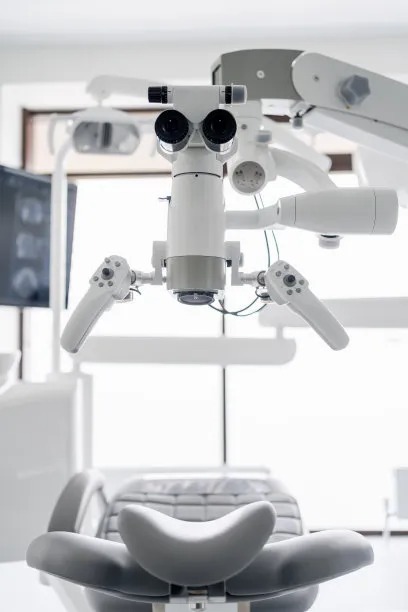Understanding the Process and Importance of Extracting a Tooth for Optimal Oral Health and Wellbeing
Summary: Tooth extraction is often viewed as a last resort in dental care, yet it plays a pivotal role in maintaining optimal oral health and overall wellbeing. This article delves into the process and significance of tooth extraction, examining its necessity in certain dental conditions, the emotional and physical recovery experiences, and the preventive aspects of this dental procedure. Understanding these elements allows patients to approach tooth extraction with a clearer perspective, ensuring they make informed decisions that align with their health goals.
1. Necessity of Tooth Extraction in Dental Care

Tooth extraction is often required when a tooth is severely decayed, damaged, or infected beyond repair. In such cases, the presence of the problematic tooth can lead to chronic pain and other dental complications, necessitating extraction as an effective solution. Dentists routinely evaluate the condition of teeth through X-rays and clinical examinations, determining the appropriate course of action based on the patients symptoms and overall oral health.
Another critical reason for tooth extraction is overcrowding. In orthodontics, the removal of teeth may be essential to create adequate space for proper alignment. This not only improves aesthetics but also enhances oral function, supporting a healthier bite. The misalignment of teeth can lead to further issues, including jaw pain and uneven wear, which can be prevented through timely extraction.
Additionally, impacted wisdom teeth frequently require extraction. As these teeth often lack sufficient space to emerge properly, they can become trapped within the jawbone or gums, creating a breeding ground for infections. Regular dental assessments often help detect such issues early, allowing proactive extraction to safeguard the overall health of the dental arch.
2. The Process of Tooth Extraction
The tooth extraction process typically begins with a thorough examination and discussion about the procedure with the dentist. Anesthesia is administered to ensure comfort, which may include local anesthesia or sedation, depending on the complexity of the extraction and the patients anxiety levels. In some cases, patients may opt for general anesthesia, especially if multiple teeth need to be removed.
Following anesthesia, the dentist carefully loosens the tooth using specific instruments like an elevator, ensuring minimal trauma to the surrounding tissue. Once loosened, the tooth is gently extracted from its socket. This stage may require techniques tailored for impacted teeth, which might involve surgical extraction methods.
After the extraction, the dentist provides aftercare instructions to promote healing and reduce the risk of infection. These instructions include guidelines on managing swelling and pain, dietary recommendations, and signs to watch for that may indicate complications. Proper aftercare is crucial for a successful recovery, allowing patients to return to their regular routines quickly.
3. Recovery After Tooth Extraction
Recovery from tooth extraction varies based on several factors, including the complexity of the procedure, the patient’s overall health, and adherence to aftercare instructions. Initially, patients may experience swelling and discomfort, but this can typically be managed with prescribed medications or over-the-counter pain relievers. Cold compresses can also help alleviate swelling during the first 24 hours.
As healing progresses, it’s important to monitor the extraction site for any signs of complications, such as excessive bleeding or persistent pain. Patients should follow their dentists advice regarding dietary choices, opting for soft foods during the initial days and gradually reintroducing solid foods as healing allows.
Emotional recovery is also an aspect that should not be overlooked. Many individuals may feel anxious or fearful about the procedure and its aftermath. Engaging with supportive friends or family and maintaining open communication with dental professionals can help ease anxiety and enhance the overall recovery experience. A positive mindset and proper support play a critical role in successful recovery.
4. Long-Term Benefits of Tooth Extraction
While the idea of tooth extraction can evoke fear, understanding its long-term benefits is essential for patients. By preventing the spread of infection or decay, timely extraction contributes to better oral health in the long run. This proactive approach can avert further complications, reinforcing the importance of regular dental check-ups for early detection.
Moreover, a well-aligned dental structure fosters better chewing function and overall comfort. By removing teeth that contribute to overcrowding or misalignment, patients can achieve more effective and comfortable dental restorations and orthodontic treatments in the future. This not only enhances facial aesthetics but also boosts self-confidence.
Lastly, maintaining optimal oral health through effective interventions like tooth extraction can mitigate systemic health risks. Research indicates that oral health is closely linked to overall health, with conditions such as gum disease potentially contributing to systemic issues like heart disease. Thus, prioritizing oral interventions ensures a holistic approach to wellbeing.
Summary:
Understanding the necessity and process of tooth extraction helps patients prepare for and recover from this common dental procedure effectively. By recognizing the long-term benefits and maintaining open communication with their dental professionals, patients can navigate through this experience with greater confidence and peace of mind.
This article is compiled by Vickong Dental and the content is for reference only.


